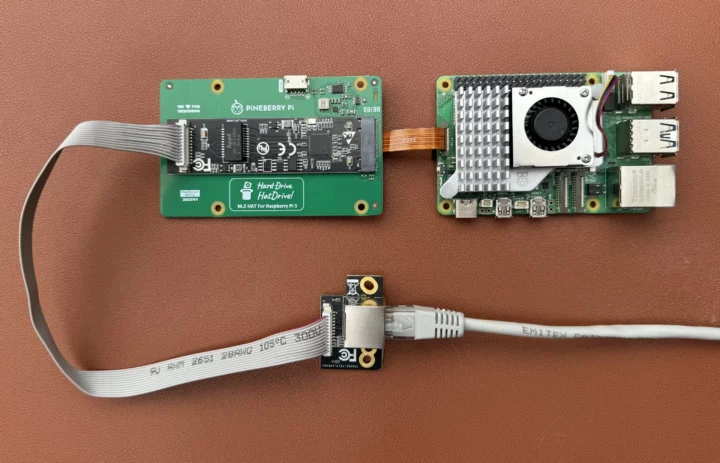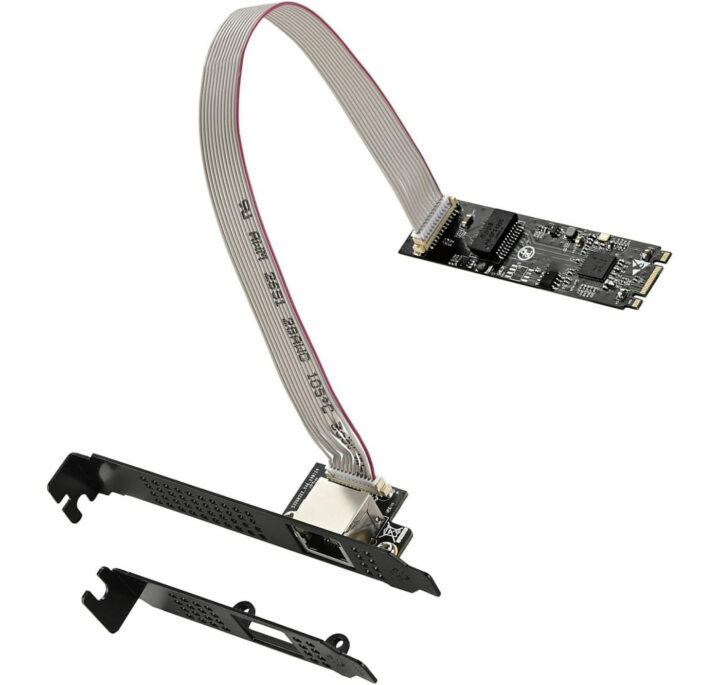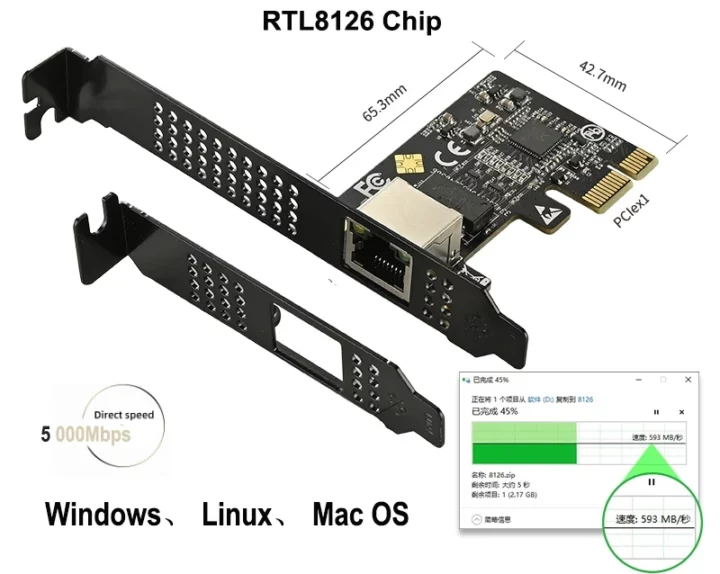The low-power RealTek RTL8126(-CG) PCIe 3.0 x1 to 5GbE controller was unveiled at Computex 2023 last year, and a few M.2 modules and PCIe cards are now available at very competitive prices.
The first module that came to my attention was the “5000Mbps Networking Card B+M Key to PCIe Adapter” from STDEV sold for $27 on Amazon (where there’s also a 7% discount) that’s an M.2 PCIe module with a ribbon cable that is connected to a board with an RJ45 jack attached to a PCIe bracket.
There’s limited information about it, and it was just added to Amazon on June 8, so there aren’t any user reviews just yet. But earlier today, Jiri Brejcha informed us he had tested a similar card (might even be the same) from Iocrest with a Raspberry Pi 5 and a Pineboards HatDrive BM1 HAT+ managing to reach 4.7 Gbps transfer speeds in both directions with iperf3 using PCIe Gen3 mode on the Pi SBC. The transfer rates dropped to 3.43 Gbps (Rx) and 3.31 Gbps (Tx) in PCIe Gen2 mode.

I’ve read the 10GbE chips can get really hot well over 100°C without cooling, but the RealTek RTL8126 chip used here tops at about 82°C under heavy traffic. Jiri also tested it successfully in Windows 11 with the drivers installed automatically. Note you’ll need to install the Linux drivers provided by RealTek for this to work since the new 5GbE controller has not made it to most Linux distributions. What’s amazing is that the Iocrest model can be purchased for $12.88 plus shipping on Aliexpress.
If your system does not happen to have a spare M.2 PCIe Key M or Key B slot available, you’ll also find RTL8126 PCIe x1 cards from Iocrest going for a similar price on Aliexpress.
The choice is currently limited, but I’m sure we’ll see plenty of RTL8126 PCIe cards and M.2 modules thanks to the low prices. I would also expect the RealTek RTL8126 5Gbps Ethernet controller to replace the RealTek RTL8125 2.5Gbps controller in some upcoming mini PCs. If you prefer a 5GbE USB dongle, we’ll need to wait for the RTL8157 PCIe to USB 3.2 controller also announced at Computex 2023. What might be complicated/pricey is finding a switch as searching for “5GbE switch” or “5Gbps Ethernet switch” returns plenty of results with “2.5GbE switch“… The best option might be getting a 10GbE switch as of now.

Jean-Luc started CNX Software in 2010 as a part-time endeavor, before quitting his job as a software engineering manager, and starting to write daily news, and reviews full time later in 2011.
Support CNX Software! Donate via cryptocurrencies, become a Patron on Patreon, or purchase goods on Amazon or Aliexpress






